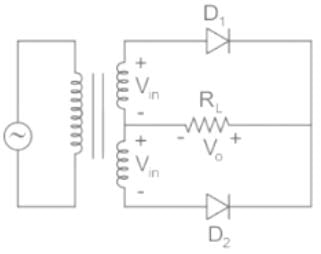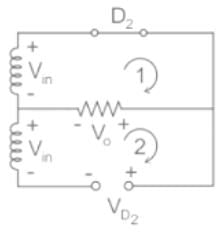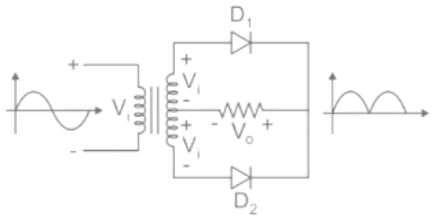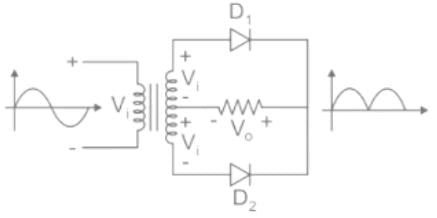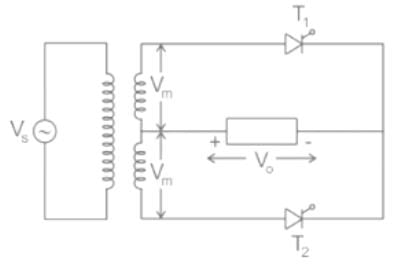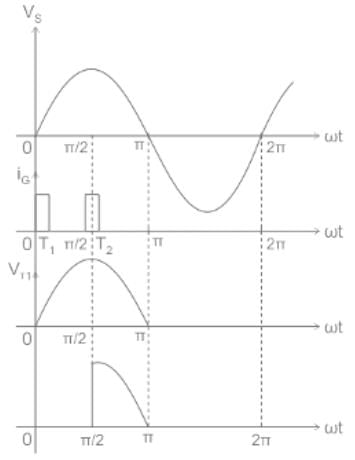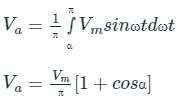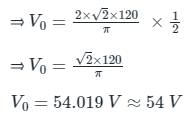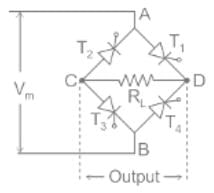Test: Single Phase Full wave mid point converters - Electrical Engineering (EE) MCQ
10 Questions MCQ Test - Test: Single Phase Full wave mid point converters
SCRs with a peak forward rating of 2 kV and an average on-state current rating of 50 A are used in a single-phase mid-point converter. If the factor of safety is 2.5, the power that can be handled by this converter is ______kW
In a center tap full wave rectifier, if the peak voltage applied between the center tap and one of the secondary 200 V, then the reverse biased diode is applied with a maximum voltage of:
A full-wave rectifier uses 2 diodes. The internal resistance of each diode is 20 Ω. The transformer RMS secondary voltage from centre tap to each end of the secondary is 50 V and the load resistance is 980 Ω. Mean load current will be
In a two-diode full wave rectifier, with a load current requirement of 4.2 A, what should be the current ratings of the diodes used?
A single-phase mid-point full-wave SCR converter with maximum mid-point voltage of Vm volts develops an average output voltage across a resistive load at firing delay angles of 0 and π/2 rad., respectively, as
In a 12 phase full wave rectifier if source frequency is 30 Hz, then the ripple frequency will be_____Hz
A single-phase AC supply is connected to a full wave rectifier through a transformer. The rectifier is required to supply an average DC output voltage of Vdc = 400 V to a resistive load of R = 10 Ω. The kVA rating of the transformer is __________ (in kVA)
A single-phase full-wave controlled rectifier, operating at 120 V rms and 60 Hz ac supply, has a firing angle of 60°. The average value of its output voltage is
A 1ϕ full wave converter with RLE load wit R = 10Ω, L = 8mH and E = 150V. The AC voltage source is 230V, 50Hz for continuous conduction. Find the average value of load current for firing angle delay of 120°.
An AC voltage of maximum value equal to 100V is applied to a single-phase fully controlled bridge circuit. The peak inverse voltage rating of each SCR used will be ______.


 = 400 V
= 400 V
